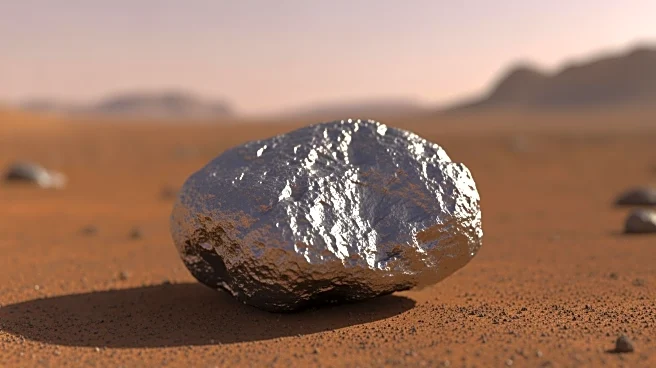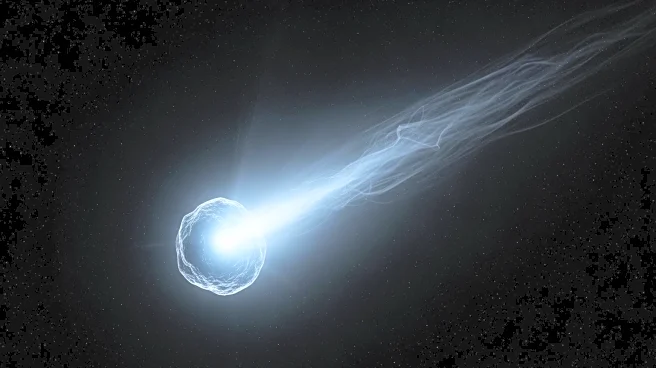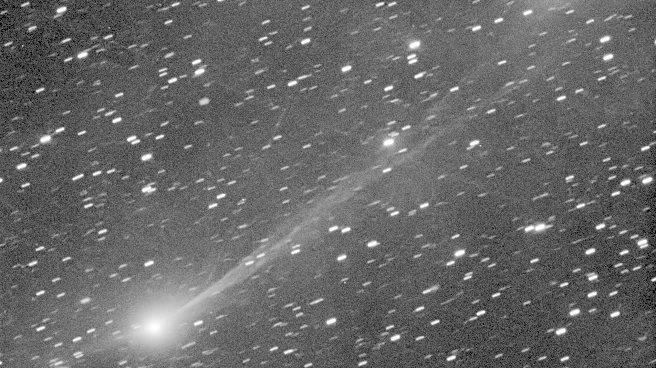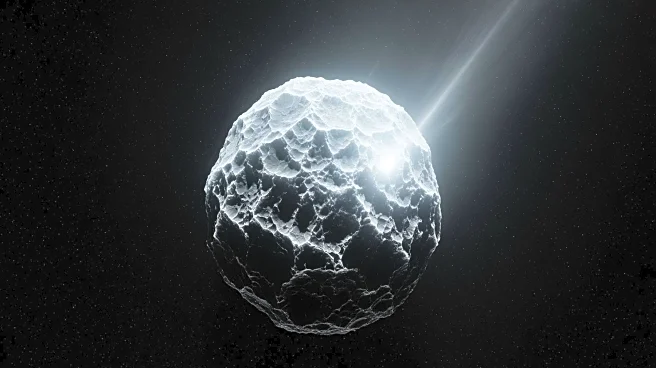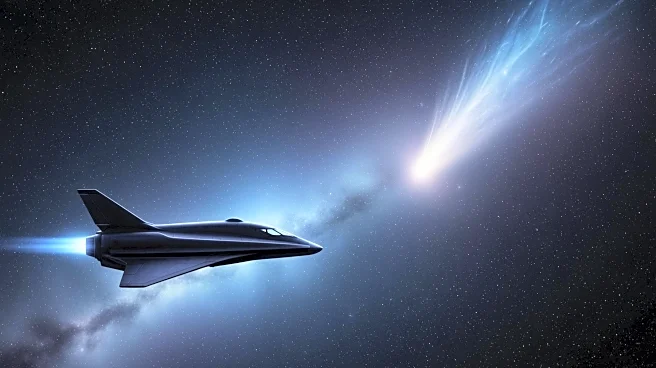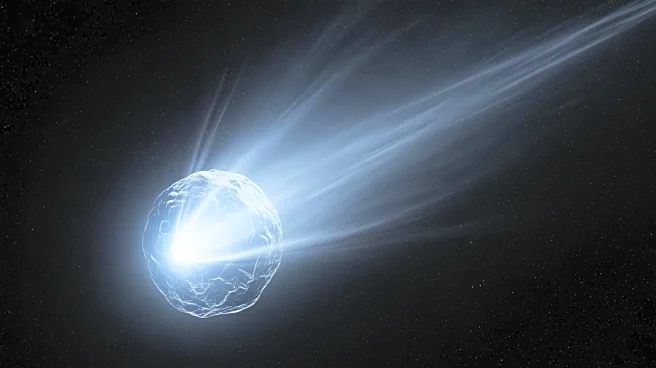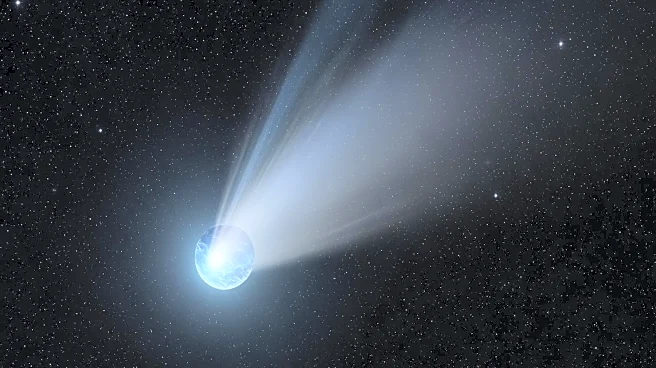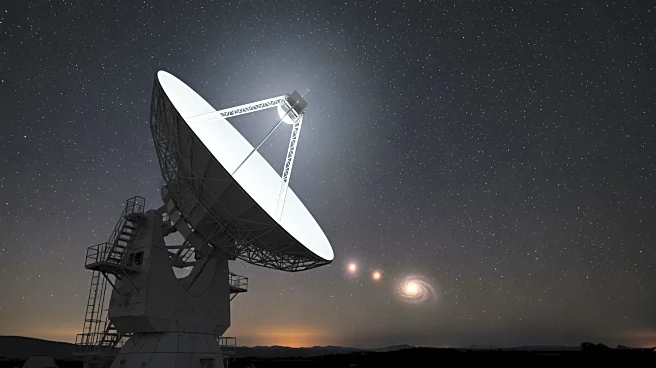What's Happening?
NASA's Perseverance rover, part of the Mars 2020 mission, has identified a uniquely shaped rock on Mars, named 'Phippsaksla,' which may be a meteorite. Captured on Sol 1629 using the Left Mastcam-Z camera, the rock exhibits a high iron and nickel content,
suggesting it could be an iron-nickel meteorite from the core of a large asteroid. This discovery is significant as it could provide valuable insights into the history of impact events within Jezero crater, where the rover is currently exploring.
Why It's Important?
The potential identification of 'Phippsaksla' as a meteorite is crucial for understanding the history of Mars and its exposure to extraterrestrial materials. Such discoveries can offer insights into the early solar system and the processes that have shaped planetary surfaces. If confirmed, this finding would add to the growing body of evidence that Mars has been impacted by material from elsewhere in the solar system, contributing to our understanding of planetary formation and evolution. It also highlights the capabilities of the Perseverance rover in conducting detailed geological analyses on Mars.
What's Next?
Further investigation is required to confirm whether 'Phippsaksla' is indeed a meteorite. If confirmed, Perseverance will join other Mars rovers in studying meteorites, enhancing our understanding of Mars' geological history. The rover will continue its mission in Jezero crater, potentially uncovering more meteorites and other geological features. These findings could inform future missions and the search for signs of past life on Mars, as meteorites can provide clues about the planet's past environment and conditions.
